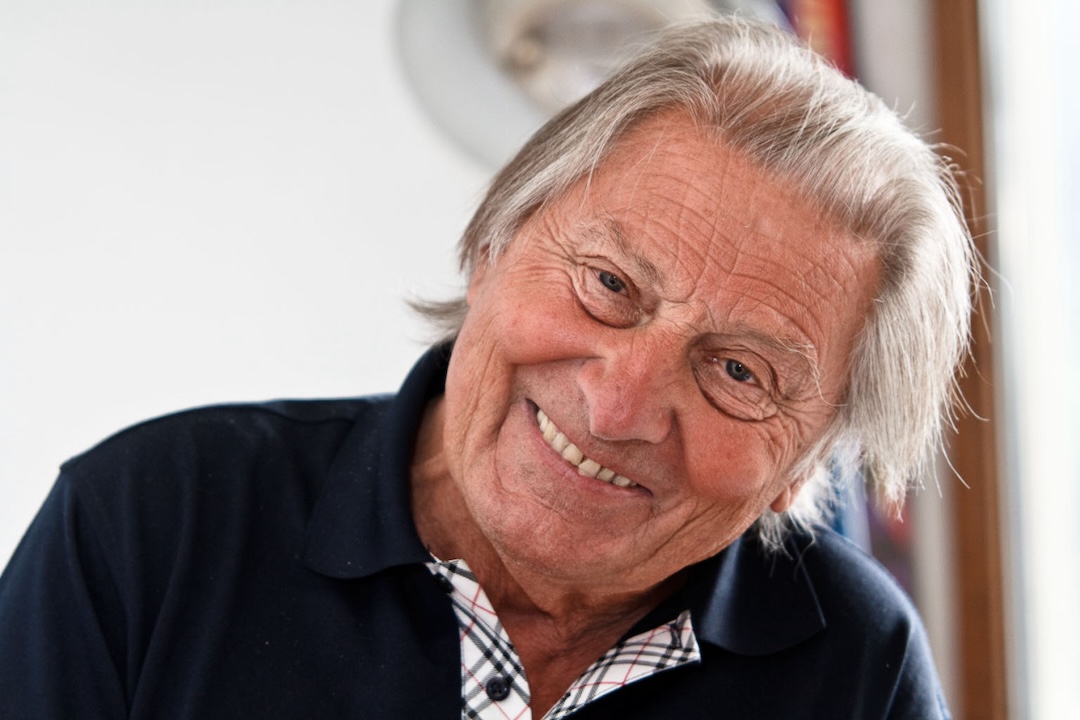Sylvain Saudan, 1936–2024

Out of Western Europe in the late 1960s and early ’70s, a new form of alpinism was dawning: that of skiing down—after climbing up—terrain formerly thought of solely as climbs. While names such as Vallençant and Baud soon captured the imagination with their 60° descents and peddle-hop turns, they weren’t the first of the modern extremists. That appellation perhaps best falls to a Swiss ski instructor and mountain guide named Sylvain Saudan.
Saudan was born in 1936 and raised near Verbier, Switzerland. As a child of the Alps, he was on skis from an early age, reportedly “skiing to school” and no doubt involved in the skill-building snowplay of mountain kids everywhere.
As the years rolled, Saudan grew into an unmistakable visage, with neck-length black hair brushed rearward from a prominent forehead, often sporting a jaunty Swiss ski instructor’s pin centered on his chest. He took up a career as a helicopter ski guide in the Bugaboos of British Columbia, eventually shifting his focus to the Kashmir region, where he founded Himalaya Heliski.
Perhaps Saudan was distracted by the mass quantities of powder available via his helicopters. It wasn’t until 1967, at 30 years old, that his reputation as the “skier of the impossible” took root. Among other inaugural descents in the Alps, that year’s feats included the Spencer Couloir on the Aiguille de Blaitière and the Whymper Couloir on the Aiguille Verte. Both runs defied opinions as to what was “skiable.”
In 1971, Saudan’s quest for the steeps brought him to the United States, where he made the first descent of Mt. Hood’s Newton Clark Headwall, a complex route with a lengthy 50° crux. Saudan’s use of a helicopter to reach Hood’s summit somewhat diminished his accomplishment (climbing is as much a part of ski alpinism as the descent), but the route was nonetheless impressive, and being a masterful self-promoter, Saudan was greeted by an eager press at the base of the mountain.
As word of Saudan’s descents spread through the tiny community of North American ski alpinists, the effect was observable. In the spring of 1971, Bill Briggs made his first descent of Wyoming’s Grand Teton and Fritz Stammberger skied the north face of North Maroon Peak in Colorado. Both events were seminal.
Over the ensuing years, two more of Saudan’s descents stand as highlights of progression. On Denali, in 1972, he skied the Messner Couloir, what’s now one of the most sought-after—yet elusive—ski descents in the world. Ten years later, he aced the denouement of his career with a first descent of 8,080-meter Gasherbrum I (Hidden Peak).
When the “skier of the impossible” passed away at age 87—from a heart attack, at home—more than one ski mountaineer couldn’t help but think: How do you do what Sylvain did and last all those years? Skill, chutzpah, plenty of luck? Or, could it be as simple as Saudan’s answer in a 2016 interview by Bernhard Scholz: “I never skied down anywhere if I wasn’t sure!”
—Louis W. Dawson

